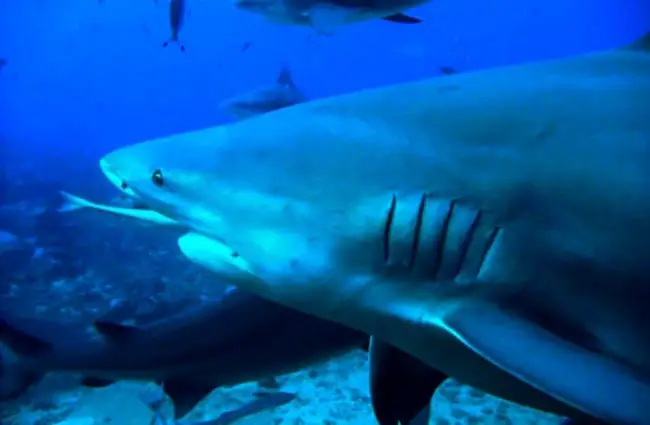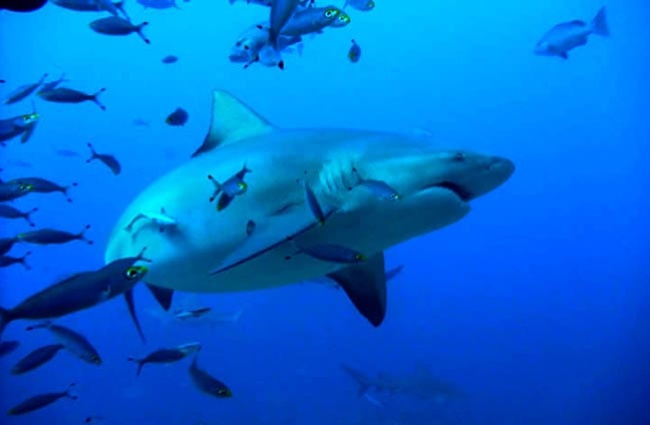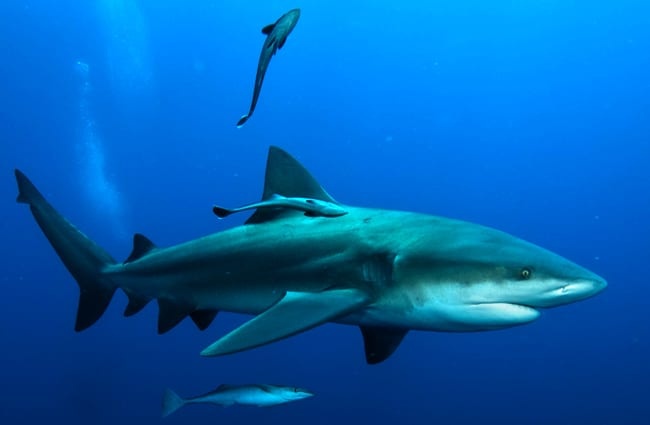The bull shark, a creature of both power and adaptability, often stirs a potent mix of fascination and apprehension. Its reputation precedes it, yet understanding this remarkable animal reveals a complex life history and an important role within aquatic ecosystems. This guide delves into the world of the bull shark, exploring its biology, behavior, habitat, and interactions with both the natural world and humankind.

Understanding the Bull Shark
The bull shark, scientifically known as Carcharhinus leucas, is a species of requiem shark, readily identified by its broad, flat snout – giving it a ‘bull’ like appearance. These sharks aren’t particularly large, averaging between 7 and 11 feet in length and weighing around 200 to 500 pounds, though larger individuals have been recorded. What truly sets the bull shark apart is its incredible tolerance for a wide range of salinity levels. Unlike most sharks, bull sharks can thrive in both saltwater and freshwater environments, allowing them to venture far up rivers and even inhabit lakes.
Physical Characteristics and Adaptations
Beyond the distinctive snout, bull sharks possess powerful bodies built for bursts of speed and maneuverability. Their coloration is typically gray on top, fading to white underneath – a camouflage strategy known as countershading. This helps them blend into the water column, making it harder for prey to spot them from above or below. A key adaptation is their ability to osmoregulate – effectively manage salt and water balance – enabling survival in drastically different aquatic conditions. They achieve this through specialized glands and kidney function.
Habitat and Distribution
Bull sharks are found in warm, shallow waters worldwide. They inhabit coastal regions, estuaries, rivers, and even lakes in tropical and subtropical areas. Their widespread distribution extends to the Atlantic, Pacific, and Indian Oceans, with populations reported in the Caribbean Sea, the Gulf of Mexico, the Mediterranean Sea, and various river systems in Australia, Africa, and Asia. Their presence in freshwater habitats is notable. They’ve been documented in the Mississippi River, the Amazon River, and even Lake Nicaragua. Their ability to travel such distances inland is linked to their osmoregulation, which may provide access to new food sources and breeding grounds.

Where to Find Bull Sharks in the Wild
For those interested in observing bull sharks in their natural habitat, several locations offer reliable sightings. Coastal regions of Florida, Australia, South Africa, and the Caribbean are prime areas. River estuaries and the mouths of large rivers are also good places to search. Guided tours are available in some locations, offering safe and responsible opportunities to observe these sharks. Remember to maintain a respectful distance and follow the guidance of experienced professionals.
Diet and Hunting Strategies
Bull sharks are opportunistic predators with a varied diet. They feed on a wide range of prey, including bony fishes, sharks, rays, turtles, birds, and even terrestrial mammals. Their hunting strategies vary depending on the prey and the environment. In shallow waters, they often ambush prey, using their powerful bodies to launch quick attacks. They are known to patrol riverbeds and estuaries, seeking out unsuspecting victims. Their teeth are broad and triangular, perfectly adapted for gripping and tearing flesh. Young bull sharks primarily feed on smaller fish and crustaceans, gradually transitioning to larger prey as they mature.
Reproduction and Life Cycle
Bull sharks are viviparous, meaning they give birth to live young. Mating typically occurs in late summer and early autumn. Females can store sperm for several months before fertilization. Gestation lasts approximately 10 to 11 months, culminating in the birth of a litter ranging from 1 to 13 pups. Pups are born in nursery areas, often shallow estuaries and river mouths where they are protected from larger predators. Young bull sharks reach sexual maturity at around 6 to 8 years of age. Their lifespan is estimated at around 16 years, although some individuals may live longer.

Ecological Role and Interactions
As apex predators, bull sharks play a critical role in maintaining the health and balance of their ecosystems. By preying on weaker or sick individuals, they help control populations and prevent the spread of disease. They also influence the behavior of prey species, shaping their distribution and abundance. Bull sharks interact with a variety of other marine animals, including remoras, which often attach themselves to the shark’s body, feeding on parasites and leftover scraps. They sometimes compete with other predators, such as tiger sharks and hammerhead sharks, for food resources.
Bull Sharks and Humans
Bull sharks are among the shark species most frequently implicated in attacks on humans. This is not because they are particularly aggressive, but rather due to a combination of factors. They inhabit shallow, coastal waters frequented by people, and their tendency to approach curious swimmers can lead to mistaken identity. However, attacks are still relatively rare, and most incidents involve minor bites. Understanding bull shark behavior and taking appropriate precautions can significantly reduce the risk of encounters. These precautions include avoiding swimming or surfing in murky waters, avoiding areas where fishing is taking place, and refraining from wearing shiny jewelry, which can resemble fish scales.
Encountering a Bull Shark: What to Do
If you encounter a bull shark while swimming or diving, stay calm and keep eye contact. Slowly back away, avoiding sudden movements. Do not splash or make erratic gestures. If the shark approaches, gently push it away with your hand or foot. If an attack occurs, fight back vigorously, aiming at the shark’s eyes and gills.

Caring for Bull Sharks in Captivity
Maintaining bull sharks in captivity presents significant challenges. They require exceptionally large tanks with high flow rates and carefully controlled water quality parameters. A varied diet of fresh and frozen fish, supplemented with vitamins and minerals, is essential. Enrichment activities, such as introducing novel objects and providing opportunities for hunting, are crucial for promoting physical and mental well‑being. Zookeepers must closely monitor the shark’s behavior for signs of stress or illness. It’s vital to avoid overcrowding and provide ample space for the shark to swim and explore. Regular veterinary checkups are necessary to ensure the shark remains healthy and thriving.
Evolutionary History
The evolutionary history of bull sharks traces back to the family Carcharhinidae, appearing in the early Cenozoic, roughly 50 to 60 million years ago. Their ancestors were likely similar in body plan, but less specialized for freshwater tolerance. The development of osmoregulatory mechanisms that allow bull sharks to venture into freshwater environments represents a key evolutionary adaptation. This adaptation opened new ecological niches, reducing competition and enabling greater population expansion.
Interesting Facts
- Bull sharks can survive for extended periods in freshwater, even tolerating full freshwater exposure.
- They exhibit a unique hunting behavior of stunning prey with a powerful headbutt.
- Bull sharks have been known to prey on other sharks, including their own species.
- They possess a high tolerance for low oxygen levels, allowing them to thrive in murky waters.
- Female bull sharks are generally larger than males.
The bull shark, despite its reputation, is a fascinating and ecologically important creature. Understanding its biology, behavior, and role within ecosystems is crucial for promoting its conservation and ensuring the health of our oceans and waterways. By dispelling myths and fostering a greater appreciation for this remarkable animal, we can work toward a future where humans and bull sharks coexist peacefully.

![Red Angus Closeup of a beautiful Red Angus cowPhoto by: U.S. Department of Agriculture [pubic domain]https://creativecommons.org/licenses/by/2.0/](https://animals.net/wp-content/uploads/2020/03/Red-Angus-4-238x178.jpg)




![Red Angus Closeup of a beautiful Red Angus cowPhoto by: U.S. Department of Agriculture [pubic domain]https://creativecommons.org/licenses/by/2.0/](https://animals.net/wp-content/uploads/2020/03/Red-Angus-4-100x75.jpg)

